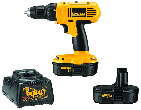Over time, all cabinets will become nicked, damaged, or gouged in some way or another. While you can always allow the situation to remain, you don't have to live with it like that. Touching up cabinets is a relatively easy way to fix any small problem that you may have, and doesn't take a whole lot of work or experience to accomplish. All you really need to do is follow these guidelines, and you can quickly having your cabinets looking great again.
- Remove old lacquer. Lacquer is one of the most common types of varnish or sealer used by manufacturers to give a cabinet its look. In order to begin touching up a cabinet, you need to remove the lacquer that is around the damaged area. This will allow you to get a better look when you are finished. Apply a little lacquer thinner to a cloth, and work the thinner into the wood.
- Spray on new lacquer. You can purchase some spray on lacquer at most home improvement stores, so pick some up that matches the current color of your cabinets. Carefully follow the directions on the back of the spray can, and apply the lacquer to your cabinets. Between each application, allow each coat to dry. This will allow you to more exactly match the current color of your cabinets.
- Touch up directly. For small damaged areas, get a can of touch up lacquer and apply it with a brush. Once again, allow the lacquer to dry completely between each application. Use the smallest brush possible, to avoid any over application. If you are nervous at all about "painting" the lacquer on by hand, then feel free to practice a little bit.
- Sand rough edges if necessary. Once you have applied the lacquer to the cabinets, you may want do a little sanding. Often when you apply lacquer to an area it will not match the previous lacquer exactly. Usually there is some kind of discrepancy in the depths which will give a rough appearance to your cabinets. If you notice this with your cabinets, you may need to do a little sanding. When you sand these rough areas, use the lightest possible touch to ensure that you don't inadvertently cause more damage. Continue to sand the areas until you can tell no difference between the new lacquered areas and the old by touch.
Author Bio
Lee Wyatt
Contributor of numerous Tips.Net articles, Lee Wyatt is quickly becoming a regular "Jack of all trades." He is currently an independent contractor specializing in writing and editing. Contact him today for all of your writing and editing needs! Click here to contact. Learn more about Lee...
Servicing Your Transmission
Servicing your transmission, otherwise known as changing the transmission filter, is a simple task, although it can be a ...
Discover More
Pinching Peppers
There are a few little tricks that anyone interested in growing their own peppers at home can use to make their pepper ...
Discover More
Installing Vinyl Plank Flooring
If you are looking for an inexpensive alternative to traditional flooring, then you may want to consider installing vinyl ...
Discover More
More Home Improvement Tips
Building TV Stands
TV stands are designed to be wonderful pieces of furniture that hold and support our televisions while we watch them. As ...
Discover More
Replacing a Light Switch
Replacing a light switch is one of the easiest of home electrical repairs that can be done Here is how you can get ...
Discover More
Removing Ceramic Wall Tiles
Have you ever wanted to replace some old tile walls, but weren't sure of how to do so? Well, before you can actually ...
Discover More

Comments